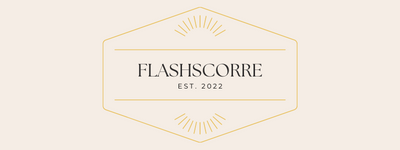In an age where environmental consciousness is at the forefront of consumer choices, the rise of zero-waste cleaning kits has sparked both enthusiasm and skepticism. Promoted as eco-friendly alternatives to conventional cleaning products, these kits promise to transform our homes into cleaner, greener spaces while minimizing our ecological footprint. But as we navigate the aisles of sustainability, one question lingers: are these zero-waste cleaning kits a genuine solution for our modern dilemmas, or merely a green gimmick repackaged for the eco-savvy shopper? In this exploration, we will delve into the convenience, efficacy, and environmental claims of these kits, weighing the benefits against potential shortcomings to uncover whether they truly represent a step forward or an empty trend.
The Rise of Zero-Waste Cleaning Kits in Modern Cleaning Routines
in recent years, there has been a notable shift in consumer behaviour, with eco-conscious individuals seeking alternatives to traditional cleaning methods. The emergence of zero-waste cleaning kits aligns perfectly with this trend, offering a blend of sustainability and efficiency. by packaging essential cleaning tools in reusable, biodegradable, or compostable materials, these kits not only reduce waste but also encourage more sustainable practices at home. The allure of convenience is undeniable, as users can now purchase all the necessary ingredients under one umbrella, eliminating the need for multiple plastic bottles and chemical-laden products.
Furthermore, the **components** of these cleaning kits often emphasize natural ingredients, appealing to health-conscious consumers eager to avoid toxic substances. Common contents include:
- Baking Soda: A versatile cleaning agent and deodorizer.
- Coconut Oil: Ideal for polishing furniture.
- Essential oils: Provide natural fragrances and additional cleaning properties.
- Reusable Cloths: Replace disposable paper towels.
By providing comprehensive solutions, these kits foster a cleaner, greener lifestyle that fits seamlessly into modern cleaning routines. However,the question remains: are they a genuine step towards sustainability or merely a new trend that may fade with time?

Evaluating the Environmental Impact of Commercial Cleaning Products
The eco-conscious consumer is increasingly scrutinizing the environmental impact of commercial cleaning products. Many popular brands contain chemicals that are not only detrimental to indoor air quality but also pose risks to aquatic ecosystems when washed away. Ingredients such as phosphates, ammonia, and synthetic fragrances can contribute to pollution, prompting a shift towards more sustainable alternatives. The production processes of these products also often involve notable carbon footprints, from extraction to packaging and distribution, adding to their overall environmental toll.
Conversely, zero-waste cleaning kits are marketed as a remedy for these concerns, yet their true efficacy needs careful evaluation. Many of these kits utilize concentrated formulas, reusable containers, and refillable options that aim to reduce plastic waste and chemical exposure.However, consumers must be vigilant; not all products labeled as “natural” or “green” are genuinely eco-friendly. Key factors to consider include:
- Ingredient Clarity: Are the ingredients clearly listed and verified?
- Sustainability of materials: Are the packaging and components recyclable or compostable?
- Life Cycle Assessment: Do they offer eco-friendly disposal options?

Convenience vs. Sustainability: What Does a Zero-Waste Kit really Offer?
Zero-waste cleaning kits promise to deliver a balance between convenience and eco-friendliness, but do they truly fulfill their promises? At first glance, they offer the allure of easy, ready-to-use solutions, packed with refillable containers, biodegradable materials, and concentrated formulas that claim to reduce plastic waste. The convenience lies in the simplicity of transitioning to a more sustainable cleaning routine without the need to scour stores for eco-friendly products or experiment with DIY alternatives. Though, this ease frequently enough masks a broader conversation about the actual effectiveness and long-term impact of such kits on the habitat.
To understand what a zero-waste kit truly offers, consider the following points:
- Ingredients: Are they organic or chemical-free?
- Packaging: Is it genuinely recyclable or compostable?
- Reuse potential: How many times can you refill the containers?
Furthermore, these kits can also promote a false sense of sustainability, where the consumer feels satisfied with their purchase without truly understanding their footprint. To explore these advantages and drawbacks, compare a few popular zero-waste cleaning kits based on the criteria above. The ensuing discussion may reveal whether these products are a genuine step toward greener living or merely a green gimmick.

Practical Tips for Transitioning to a Zero-Waste Cleaning Lifestyle
Transitioning to a zero-waste cleaning lifestyle may seem daunting at first, but with a bit of planning and creativity, it can be both manageable and rewarding. Start by assessing your current cleaning habits and identifying areas where waste is generated most. Here are some practical steps to help you along the way:
- Make Your Own Cleaners: Combine natural ingredients like vinegar, baking soda, and essential oils to create effective and eco-friendly cleaning solutions.
- Invest in Reusable Tools: Opt for reusable cloths, mop heads, and scrub brushes instead of disposable wipes and sponges.
- Declutter Regularly: Adopt a regular decluttering routine to minimize the items you own and clean,which can reduce overall cleaning time and materials needed.
- Store Properly: Use glass or metal containers for your homemade cleaners to reduce plastic waste and keep your products fresh.
Additionally, embracing a zero-waste mindset requires a shift in how we view cleaning products and tools. Consider creating a cleaning kit tailored to your needs with an emphasis on sustainability. Below is a simple table to help visualize essential items for your zero-waste cleaning kit:
| Item | Purpose | Eco-Friendly Choice |
|---|---|---|
| All-purpose cleaner | Multi-surface cleaning | Homemade vinegar-based cleaner |
| Scrub brush | Removing tough stains | Bamboo scrub brush |
| Microfiber cloths | Dusting and wiping | Reusable cotton cloths |
| Mop | Floor cleaning | Washable mop head |
Insights and Conclusions
As we draw the curtains on our exploration of zero-waste cleaning kits, the line between convenience and mindful living blurs into a tapestry of choices.These eco-friendly solutions promise to simplify our cleaning routines while championing sustainability. However, as consumers, it’s essential to peel back the packaging and discern whether we’re embracing a genuine lifestyle change or simply succumbing to green-washing trends.
In a world increasingly driven by environmental consciousness, the rise of zero-waste kits invites us to reassess our purchasing habits. Are we harnessing their potential to reduce our carbon footprint, or are we simply trading one convenience for another, leaving long-term impact still unmeasured? Ultimately, the decision rests with us. Whether you choose to adopt these innovative cleaning companions or stick with traditional methods, the journey toward a cleaner planet starts with informed choices. May our commitment to reducing waste fuel a meaningful transition towards sustainability in every corner of our lives.


